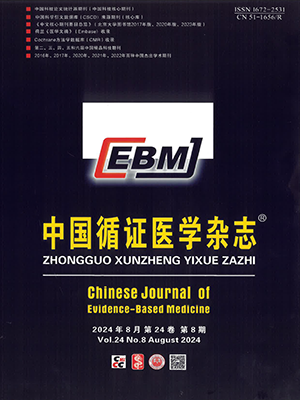| 1. |
Jin BQ. Cytokine and receptor, In: Jin BQ, Editor-in-chief. Celluler and molecular immunology.2nd ed. Beijing: Science Publishing House, 2001. 97-172.
|
| 2. |
He YQ, Zhang XB, Wu ZH. Cytokine and psoriasis. China J Lepr Skin Dis, 2003, 19(3): 248-250.
|
| 3. |
He YQ, Zhang XB, Wu ZH, et al. Study of cytokines IFN-γ、IL-4 levels in psoriatic patients in vitro. J Clin Dermatol, 2002, 31(12): 762-763.
|
| 4. |
Huang Q, Zheng ZZ, Zhu LC, et al. The determination of levels of nitric oxide, interleukin-8, interleukin-4 and interferon-gamma in serums of psoriatic. J Clin Dermatol, 2002, 31(6): 344-345.
|
| 5. |
Jiang JH, Pu XM. Determination of serum IL-2, 6 and interferon-γin the psoriasis vulgaris patients of Uighur and Han nation. J Dermatology and Venereology, 2002, 24(2): 3-4.
|
| 6. |
Wang YJ, Wu SM, Luo ZC. The levels and clinical significance of IL-2, IFN-γ, IL-12 and TNF-ain peripheral blood of patients with psoriasis vulgaris. China J Lepr Skin Dis, 2002, 18(4): 327-329.
|
| 7. |
Xu LM, Wang YH, Li H, et al. Expression of IFN-γ and IL-18 in peripheral blood of psoriasis. Chin J Dermatol, 2003, 36(10): 577-579.
|
| 8. |
Yan H, Ye QY, Hao F, et al. In vitro study on Th1/Th2 pattern of psoriasis. Acta Academiae Medicinae Militaris Tertiae, 2001, 23(11): 1335-1336.
|
| 9. |
Zhang LF, Wu QX, Wang Q. Study on the levels of cytokines in sera of patients with various types of psoriasis. Chin J Dermatol, 2001, 34(2): 101-102.
|
| 10. |
Zhang XB, He YQ, Wu ZH, et al. Investigation on methotrexate interfere on human keratinocytes proliferation in vitro. Chin J Dermatol, 2003, 36(3): 151-153.
|
| 11. |
金伯泉. 细胞因子及其受体. 见:金伯泉. 主编. 细胞和分子免疫学. 第2版. 北京: 科学出版社, 2001. 97-172.
|
| 12. |
何玉清, 张锡宝, 吴志华. 细胞因子与银屑病. 中国麻风皮肤病杂志, 2003, 19(3): 248-250.
|
| 13. |
Szegedi A, Aleksza M, Gonda A, et al. Elevated rate of Thelper1 (T(H)1) lymphocytes and serum IFN-gamma levels in psoriatic patients. Immunol Lett, 2003, (86): 277-280.
|
| 14. |
Bonifati C, Ameglio F, Carducci M, et al. Interleukin-1-beta, Interleukin-6, and Interferon-gamma in suction blister fluids of involved and uninvolved skin and in sera of psoriatic patients. Acta Derm Venereol (Stockh), 1994, 186: 23-24.
|
| 15. |
Mahmoud F, Abul A, Al-seleh Q, et al. Differential expression of interferon gamma by mitogen-stimulated peripheral blood mononuclear cells among Kuwaiti psoriasis patients. J Dermatol, 1999, 26(1): 23-28.
|
| 16. |
Chodorowska G. Plasma concentrations of IFN-gamma and TNF-alpha in psoriatic patients before and after local treatment with dithranol ointment. J Eur Acad Dermatol Venereol, 1998, (10): 147-151.
|
| 17. |
Ockenfels HM, Wagner SN, Keim-Maas C, et al. Lithium and psoriasis: cytokine modulation of cultured lymphocytes and psoriasis keratinocytes by lithium. Arch Dermatol Res, 1996, 288: 173-178.
|
| 18. |
Rotsztejn H, Zalewska A, Trznadel-Budzko E, et al. Influence of systemic photochemotherapy on regulatory T cells and selected cytokine production in psoriatic patients: a pilot study. Med Sci Monit, 2005, 11(12): 594-598.
|
| 19. |
Austin LM, Ozawa M, Kikuchi T, et al. The majority of epidermal T cells in Psoriasis vulgaris lesions can produce type 1 cytokines, interferon-gamma, interleukin-2, and tumor necrosis factor-alpha, defining TC1 (cytotoxic T lymphocyte) and TH1 effector populations: a type 1 differentiation bias is also measured in circulating blood T cells in psoriatic patients. J Invest Dermatol, 1999, 113(5): 752-759.
|
| 20. |
Tigalonova M, Bjerke JR, Gallati H, et al. Serum levels of interferons and TNF-alpha are not correlated to psoriasis activity and therapy. Acta Derm Venereol(Stockh), 1994, 186: 25-27.
|
| 21. |
Kagi MK, Wuthrich B, Montano E, et al. Differential cytokine profiles in peripheral blood lymphocyte supernatants and skin biopsies from patients with different forms of atopic dermatitis, psoriasis and normal individuals. Int Arch Allergy Immunol, 1994, 103: 332-340.
|
| 22. |
Kanda N, Tani K, Enomoto U, et al. The skin fungus-induced Th1- and Th2-related cytokine, chemokine and prostaglandin E2 production in peripheral blood mononuclear cells from patients with atopic dermatitis and psoriasis vulgaris. Clin Exp Allergy, 2002, 32: 1243-1250.
|
| 23. |
El Barnawi NY, Giasuddin AS, Ziu MM, et al. Serum cytokine levels in psoriasis vulgaris. Br J Biomed Sci, 2001, 58(1): 40-44.
|
| 24. |
Jacob SE, Nassiri M, Kerdel FA, et al. Simultaneous measurement of multiple Th1 and Th2 serum cytokines in psoriasis and correlation with disease severity. Mediators of Inflammation, 2003, 12(5): 309-313.
|
| 25. |
Gomi T, Shiohara T, Munakata T, et al. Interleukin 1 alpha, tumor necrosis factor alpha, and interferon gamma in psoriasis. Arch Dermatol, 1991, 127(6): 827-830.
|
| 26. |
何玉清, 张锡宝, 吴志华, 等. 银屑病患者细胞因子γ-干扰素、白介素4水平的体外研究. 临床皮肤科杂志, 2002, 31(12): 762-763.
|
| 27. |
黄琼, 郑志忠, 祝禄川, 等. 银屑病患者血清中NO、IL-8、IL-4和IFN-γ水平测定. 临床皮肤科杂志, 2002, 31(6): 344-345.
|
| 28. |
蒋建华, 普雄名. 维、汉寻常型银屑病患者血清白介素2、6及干扰素γ含量测定. 皮肤病与性病, 2002, 24(2): 3-4.
|
| 29. |
王雨娟, 武三卯, 骆志成. 寻常型银屑病患者外周血中IL-2、IFN-γ、IL-12和TNF-γ的测定及其临床意义. 中国麻风皮肤病杂志, 2002, 18(4): 327-329.
|
| 30. |
徐丽敏, 王彦红, 李虹, 等. 银屑病患者外周血干扰素γ和白介素18的表达. 中华皮肤科杂志, 2003, 36(10): 577-579.
|
| 31. |
阎衡, 叶庆佾, 郝飞, 等. 银屑病Th1/Th2模式的体外试验. 第三军医大学学报, 2001, 23(11): 1335-1336.
|
| 32. |
张良芬, 吴勤学, 王群. 银屑病患者血清中细胞因子状态的研究. 中华皮肤科杂志, 2001, 34(2): 101-102.
|
| 33. |
张锡宝, 何玉清, 吴志华, 等. 银屑病患者外周血CD4+T细胞内干扰素γ、白介素4表达与发病的关系. 中华皮肤科杂志, 2003,36(3): 151-153.
|




